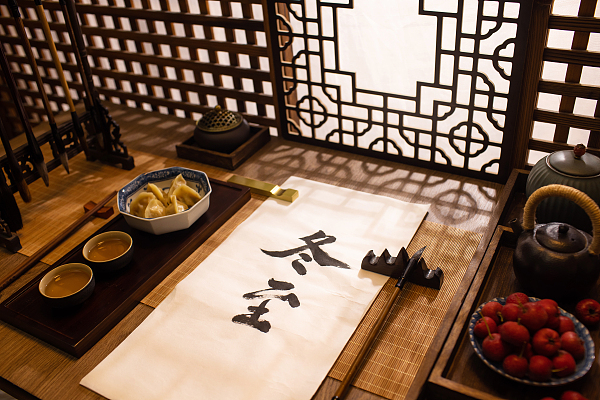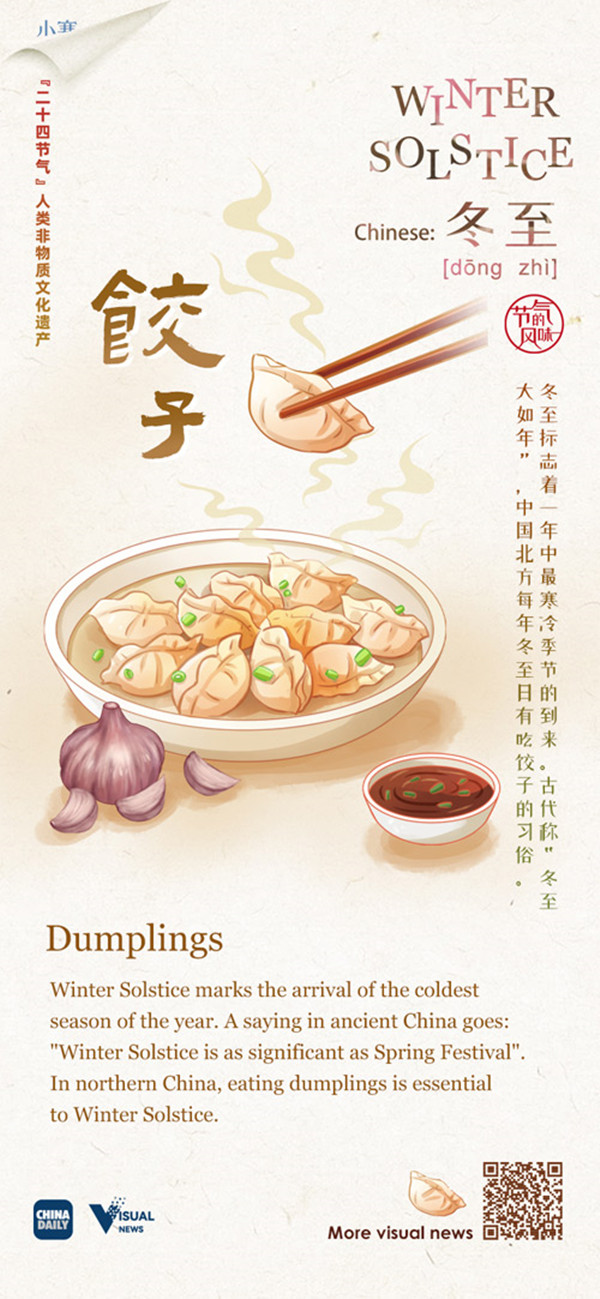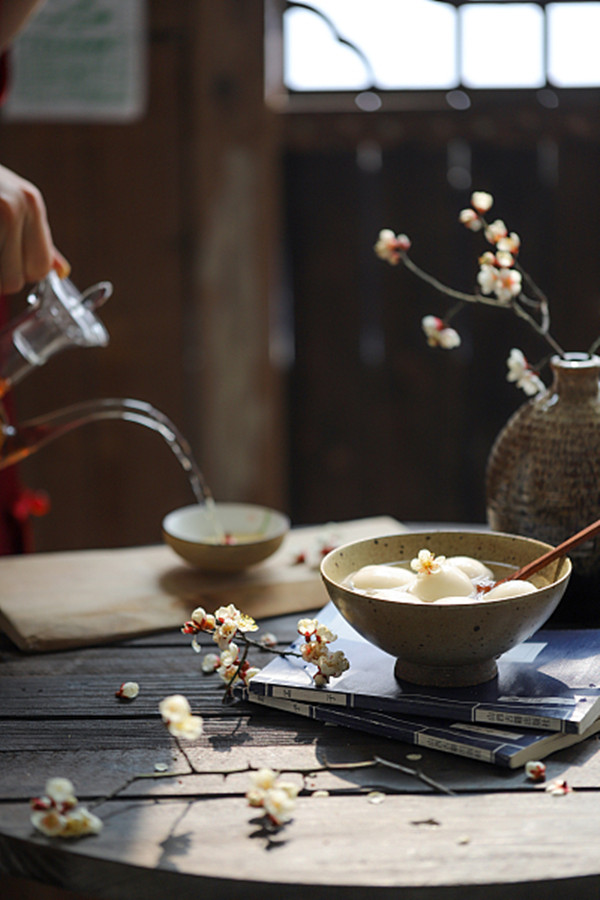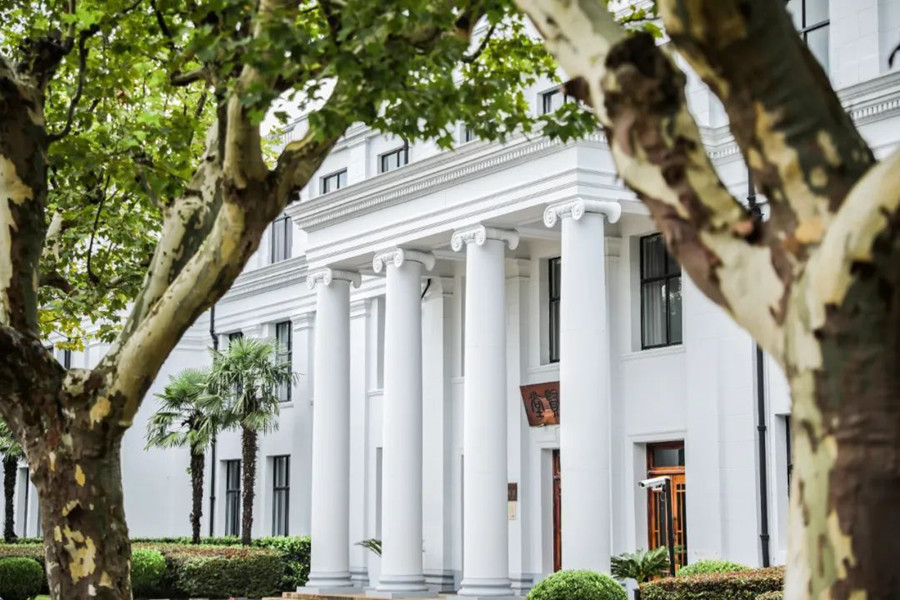Things you may not know about Winter Solstice
The traditional Chinese lunar calendar divides the year into "24 solar terms". Winter Solstice (dong zhi), the 22nd solar term of the year, begins this year on Dec 21 and ends on Jan 4.
On the first day of Winter Solstice, the Northern Hemisphere experiences its shortest day and the longest night of the year, as the sun shines directly at the Tropic of Capricorn. From then on, the days become longer and the nights become shorter. Winter Solstice also marks the arrival of the coldest season of the year.
Here are eight things you should know about Winter Solstice.

Winter Solstice Festival
There was a saying in ancient China, " Winter Solstice is as significant as Spring Festival."
As early as the Zhou Dynasty (c.11th century-256 BC), people worshipped the gods on the first day of Winter Solstice, which also was the first day of the new year. Winter Solstice became an officially celebrated festival during the Han Dynasty (206 BC-AD 220), observed by officials and common people alike.
During subsequent dynasties, such as the Tang (618-907), Song (960-1279), and Qing (1644-1911), Winter Solstice was a day to offer sacrifices to Heaven and ancestors.
Eating nuts
When midwinter arrives, vital movement begins to decline and calm down. In this period, eating an appropriate amount of nuts, such as peanuts, walnuts, chestnuts, hazelnuts, and almonds, is good for one's body. Traditional Chinese medical science teaches that the quality of a nut lies in its tepidity and that most nuts serve to nourish the kidneys and strengthen the brain and heart.
Eating dumplings
During Winter Solstice in North China, eating dumplings is essential to the festival. There is a saying that goes: "Have dumplings on the first day of Winter Solstice and noodles on the first day of Summer Solstice."

Eating wontons
People in Suzhou, Jiangsu province, are accustomed to eating wontons in midwinter. According to legend, during the midwinter feast 2,500 years ago, the King of Wu — one of the states during the Western Zhou Dynasty (c.11th century-771 BC) and the Spring and Autumn Period (770-476 BC) — was disgusted with all kinds of costly foods and wanted to eat something different. A woman named Xishi then came into the kitchen to make wontons to honor the king's wish. He loved the meal and gorged himself. To commemorate Xishi, the people of Suzhou made wontons the official food of the festival.
Eating tangyuan
In places such as Shanghai, people eat tangyuan, a kind of stuffed small dumpling ball made of glutinous rice flour, to celebrate Winter Solstice.

Eating mutton and vermicelli soup
In Yinchuan, Ningxia Hui autonomous region, people call midwinter the "Ghost Festival". On that day, it is customary for people there to drink mutton and vermicelli soup with dumplings.
Eating rice cakes
During Winter Solstice, Hangzhou residents traditionally eat rice cakes. In the past, as Winter Solstice approached, every household would make rice cakes to worship their ancestors or to give as gifts to relatives and friends. Today, although fewer families eat homemade rice cakes, people still buy them during this period.
Eating red beans and glutinous rice
In some regions south of the Yangtze River on the first day of Winter Solstice, the whole family gets together to have a meal made of red beans and glutinous rice to drive away ghosts and other evil things.
Vocabulary
冬至
dōng zhì
Winter Solstice
北半球
běi bàn qiú
Northern Hemisphere
坚果
jiān guǒ
nuts
饺子
jiǎo zi
dumplings
羊肉
yáng ròu
mutton
冬至意味着一年中最冷的时节来临。
dōng zhì yì wèi zhe yì nián zhōng zuì lěng de shí jié lái lín
Winter Solstice marks the arrival of the coldest season of the year.
冬至过后,白昼变长,黑夜变短。
dōng zhì guò hòu, bái zhòu biàn cháng, hēi yè biàn duǎn
After Winter Solstice, the days become longer and the nights become shorter.

